Squats are more than a gym staple. They’re an essential human movement pattern. From sitting in a chair to picking up your kid, the ability to squat well touches every part of life. That’s why they’re a go-to in rehab, sports performance, and general health routines. But not all squats are the same—and how we perform them matters. Whether it’s the way we position our trunk or how deep we go, these variables directly affect muscle activation, joint loading, and injury risk. Today, thanks to AI-powered tools like the AiKYNETIX Web Platform, we can now objectively analyze these differences using just a smartphone camera.
Overhead Squat: A Diagnostic Powerhouse
🏥 In Rehab:
- It promotes joint mobility in the shoulders, spine, hips, and ankles.
- Reveals postural imbalances, like kyphosis or excessive lumbar extension.
- Improves proprioception, balance, and core stability—all essential in injury recovery.
- Allows gradual loading of sensitive joints.
🏋️♂️ In Sports:
- Tests functional mobility and readiness for load-bearing.
- Trains upper-lower body coordination.
- Strengthens stabilizer muscles crucial in CrossFit, gymnastics, and Olympic lifting.
- Prepares athletes for overhead lifts like the snatch or jerk.
How Form Changes Everything
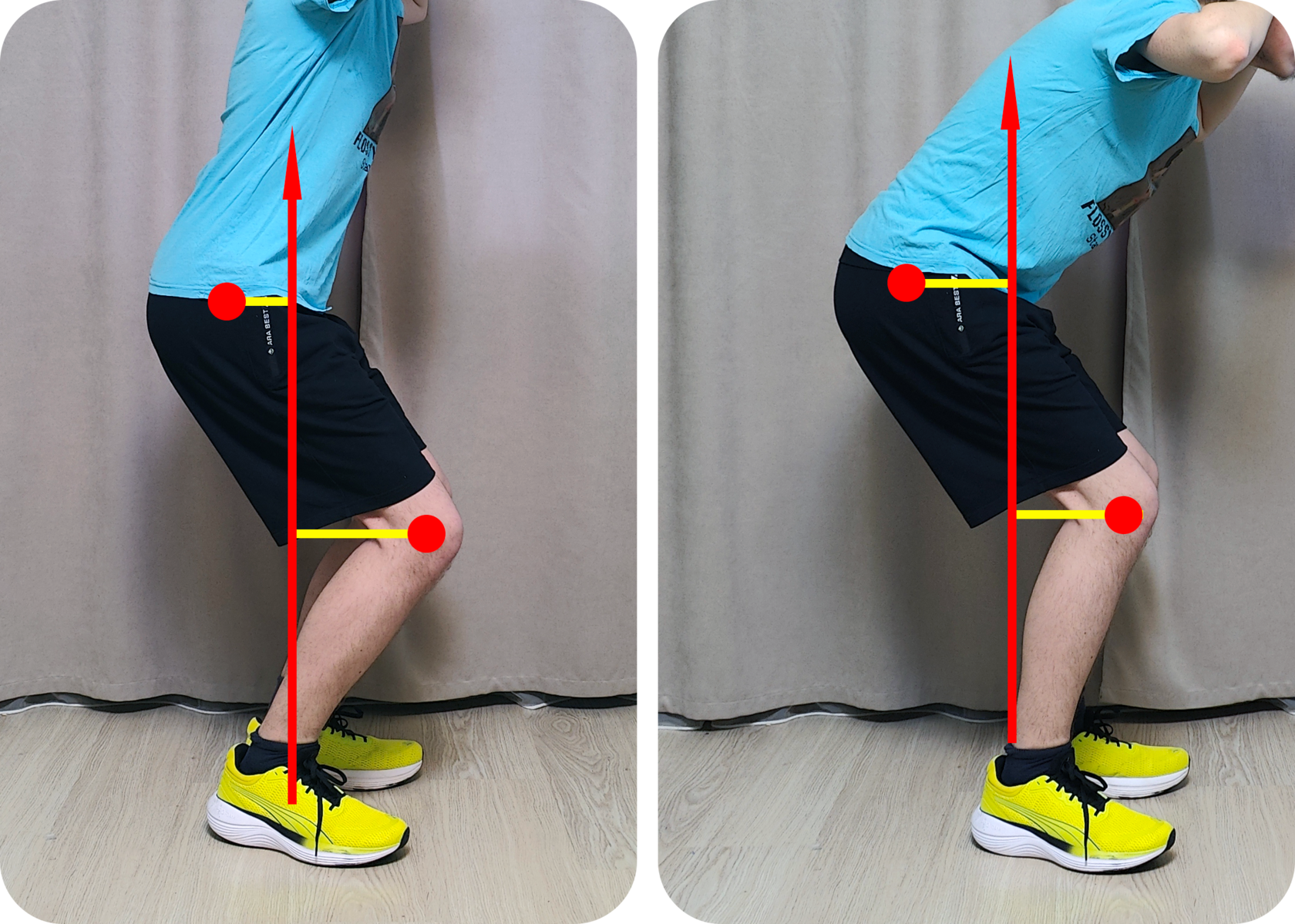
Pic. 1 Trunk Inclination and Load Distribution.
Sagittal plane orientation of the trunk influences external moments at the hip and knee.
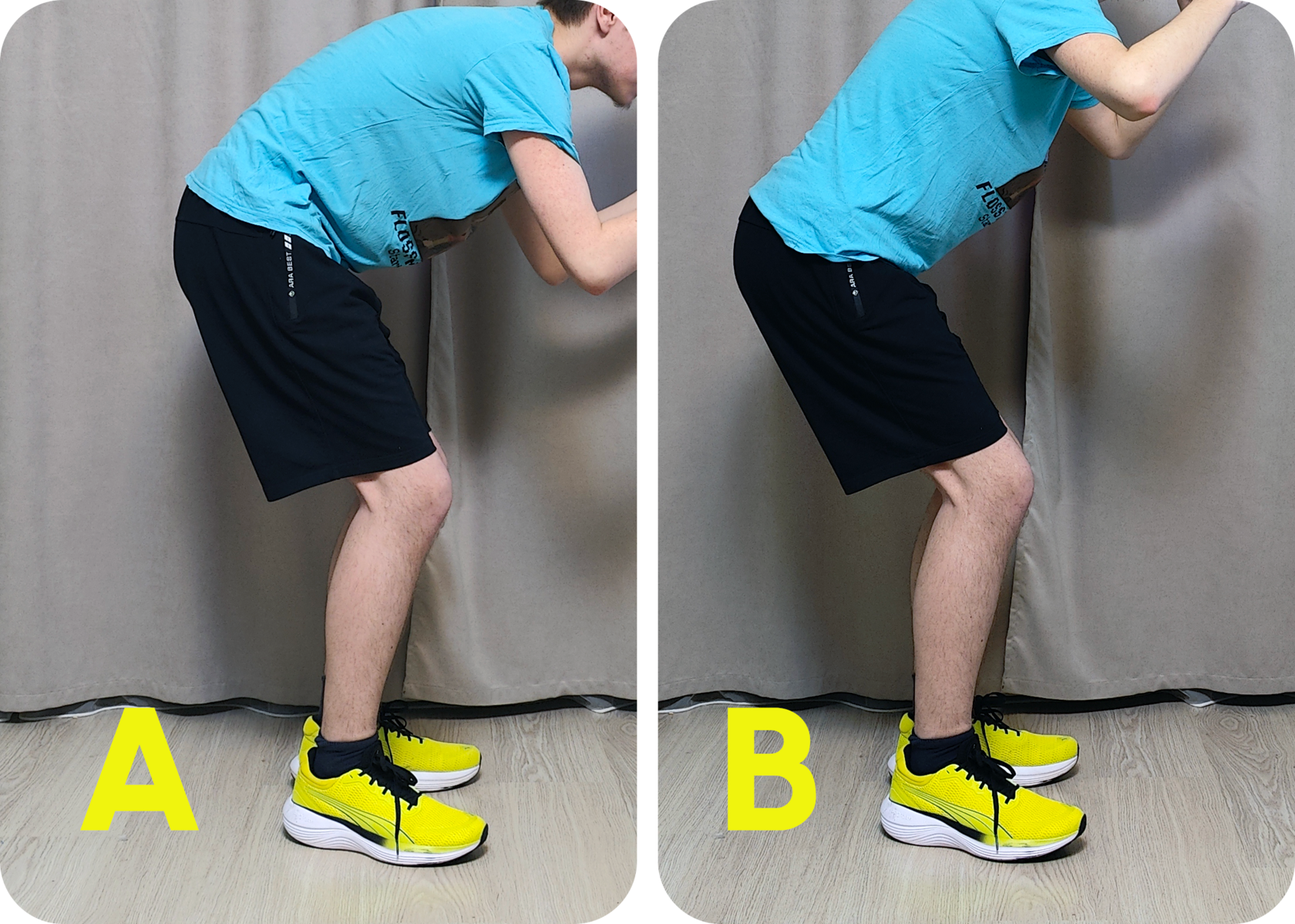
Pic. 2 Good vs. Bad Forward Lean.
(A) Forward inclination by spine flexion increases lumbar stress. (B) A neutral spine with hip flexion improves load control.
Tibia, Feet, and Flexibility
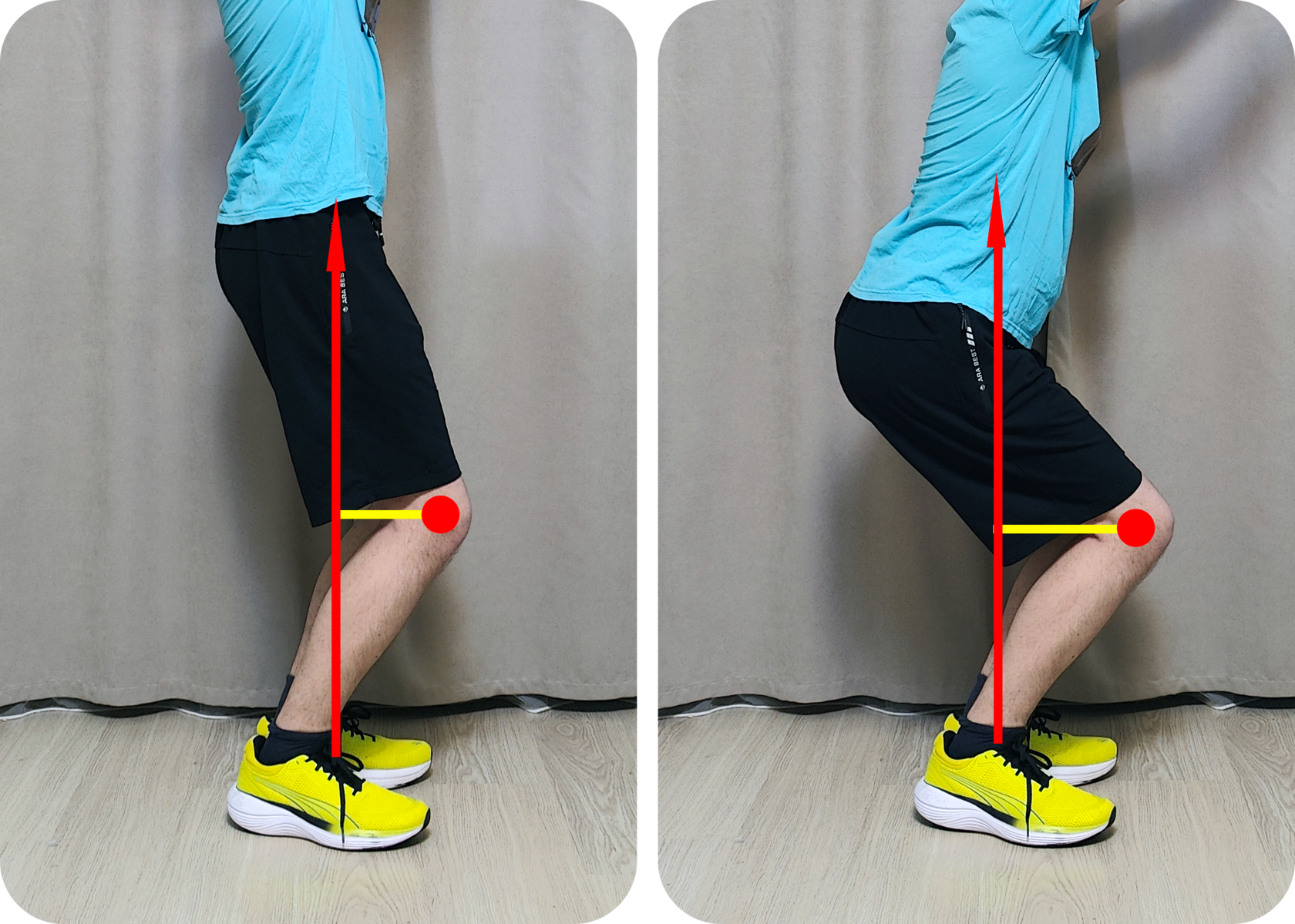
Pic. 3 Tibial Inclination and Knee Loading.
Sagittal plane tibial inclination shifts the external moment at the knee joint.
Avoiding the ‘Butt Wink’
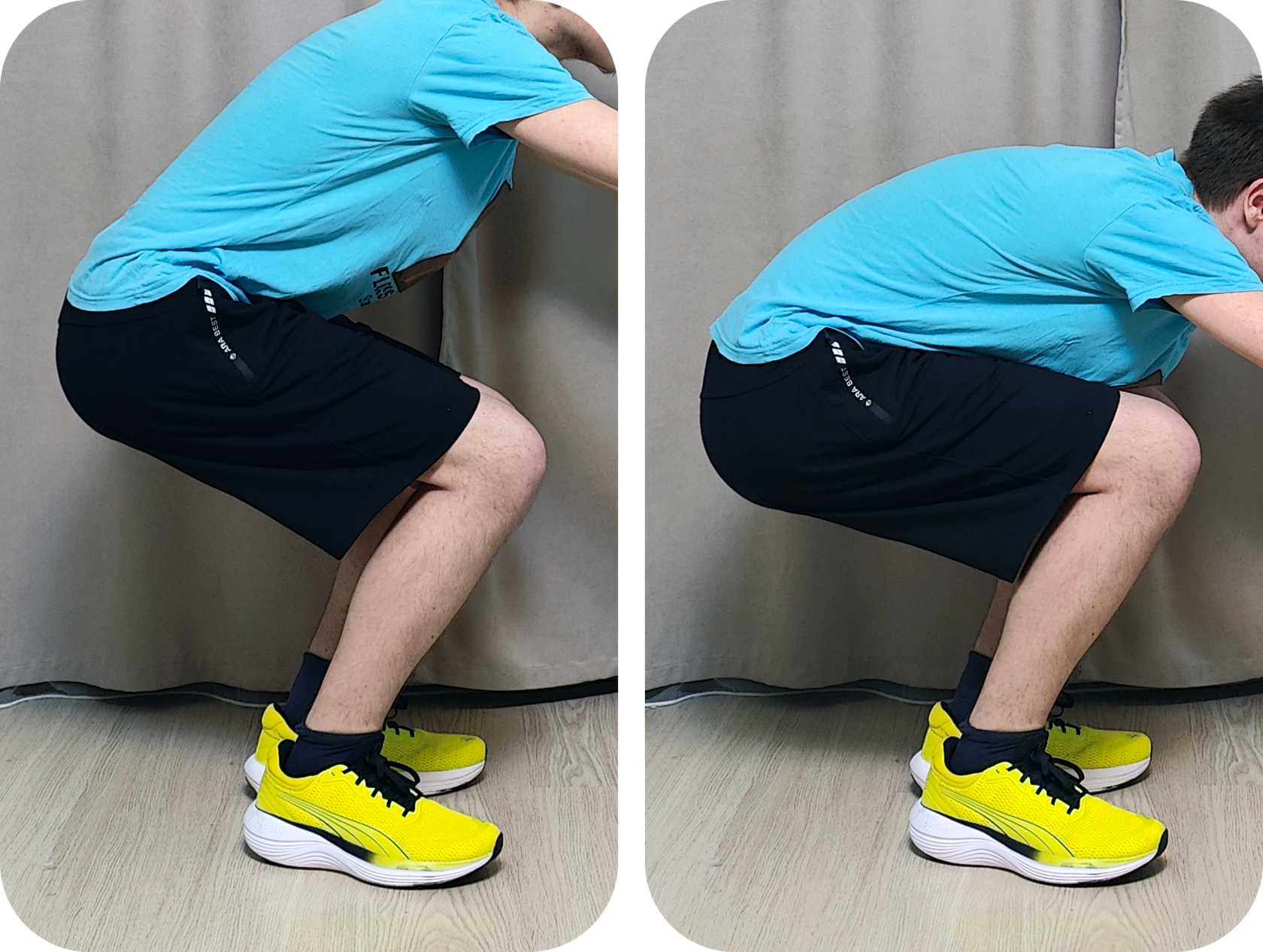
Pic. 4 Depth vs. Mobility: Avoiding the 'Butt Wink'
Squatting beyond available hip flexion results in posterior pelvic tilt and lumbar stress.
Hip vs. Knee Focus: Let AI Measure It
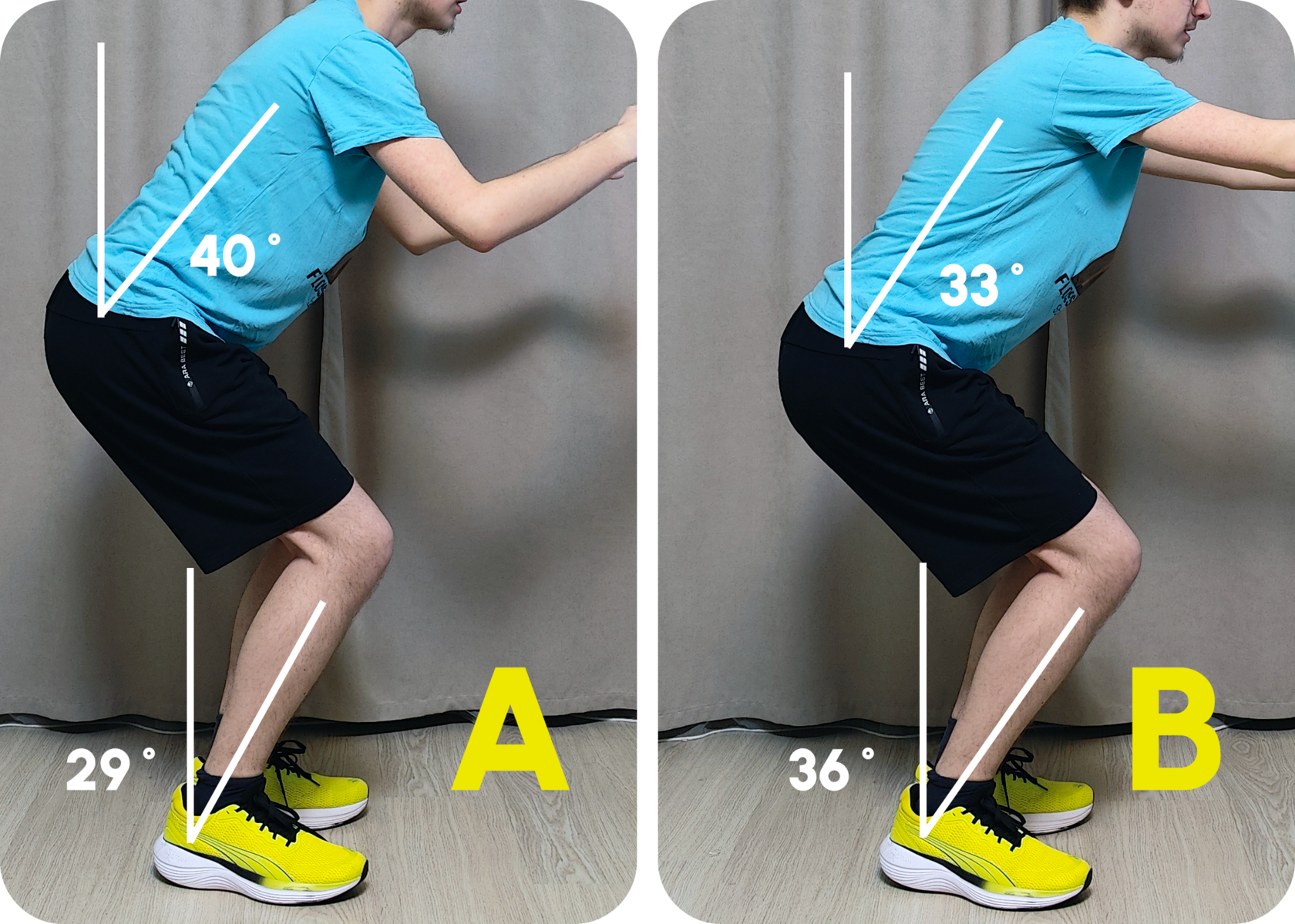
Pic. 5 Hip-Dominant vs. Knee-Dominant Squats.
(A) When trunk lean > tibia lean → hip-dominant; (B) tibia lean > trunk → knee-dominant. A balanced squat has equal angles.
From AI to Action: AiKYNETIX in Rehab and Performance
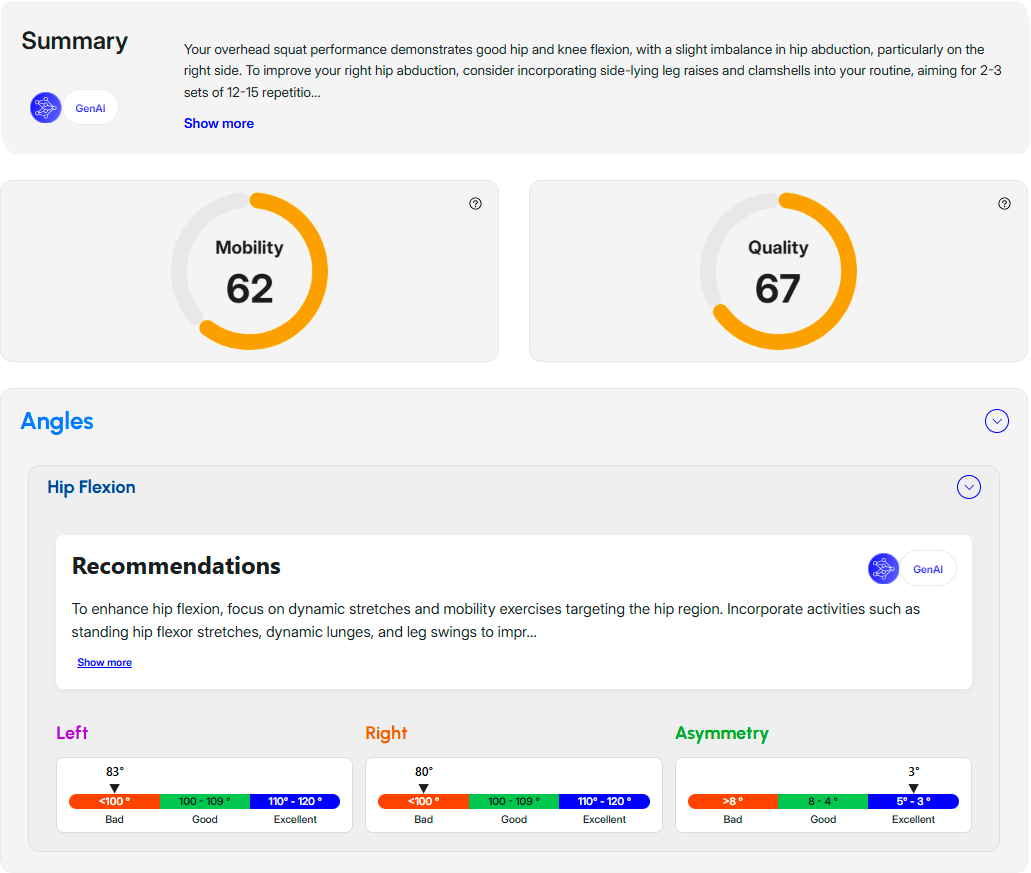
Pic. 6 AiKYNETIX Mobility Summary.
Overview of user mobility, squat quality, and asymmetry insights, color-coded for clarity.
What You Can Learn from a Single Test
📊 Mobility: 62 / Quality: 67
- Good hip and knee flexion mechanics
- Right hip abduction imbalance (16° vs. 9° on the left)
- Excellent ankle dorsiflexion (16°–18°)
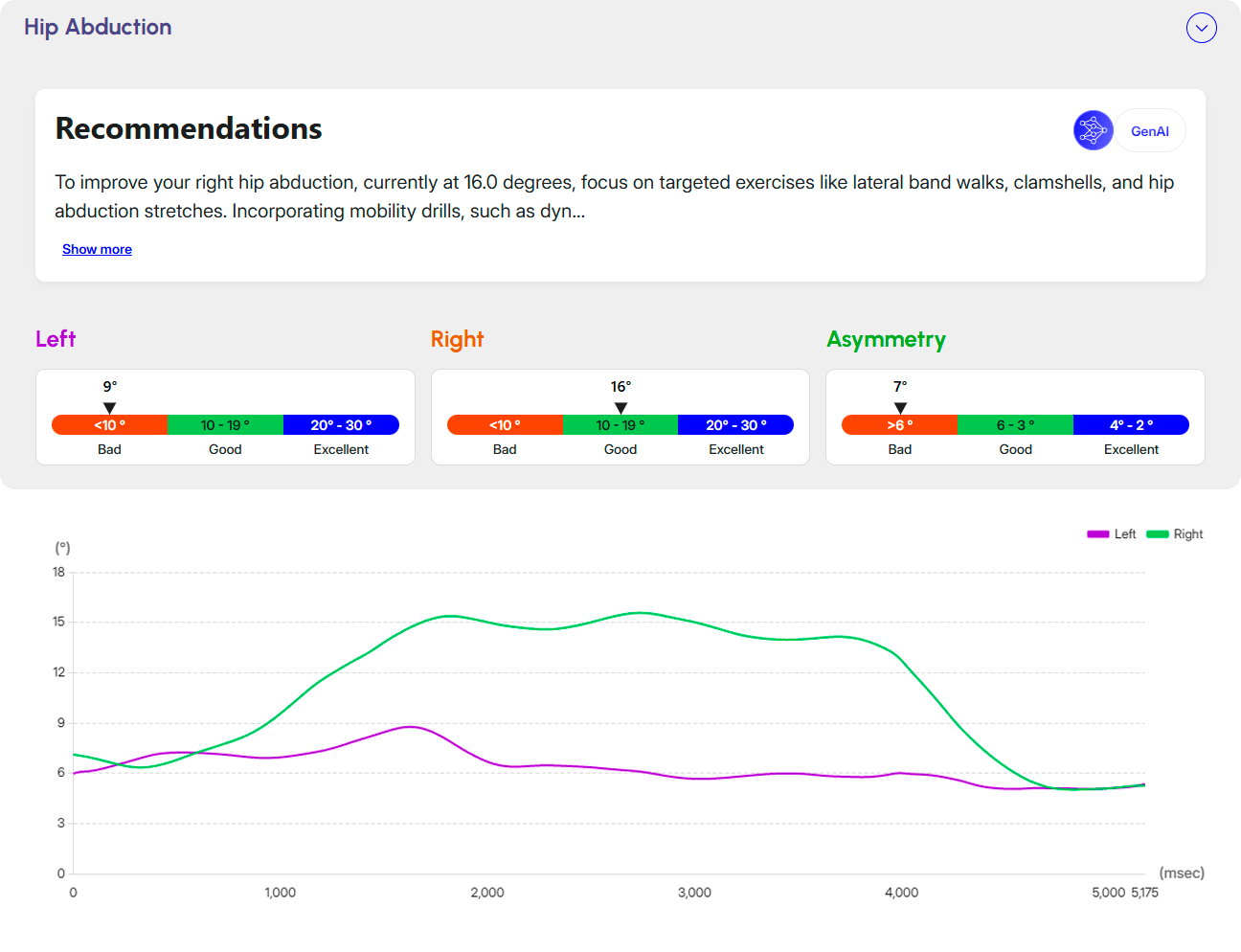
Pic. 7 Hip Abduction Imbalance.
Bar graph visualizing left-right asymmetry in hip abduction with targeted exercise suggestions.
- Correct imbalance with side-lying leg raises & clamshells (3 sets of 12–15 reps)
- Add dynamic stretches (hip flexors, glutes, circles)
- Retest weekly to monitor progress
- Hip Flexion: 80–83° (should be >110°)
- Knee Flexion: 82–84° (goal: >130°)
- Ankle Dorsiflexion: Excellent!
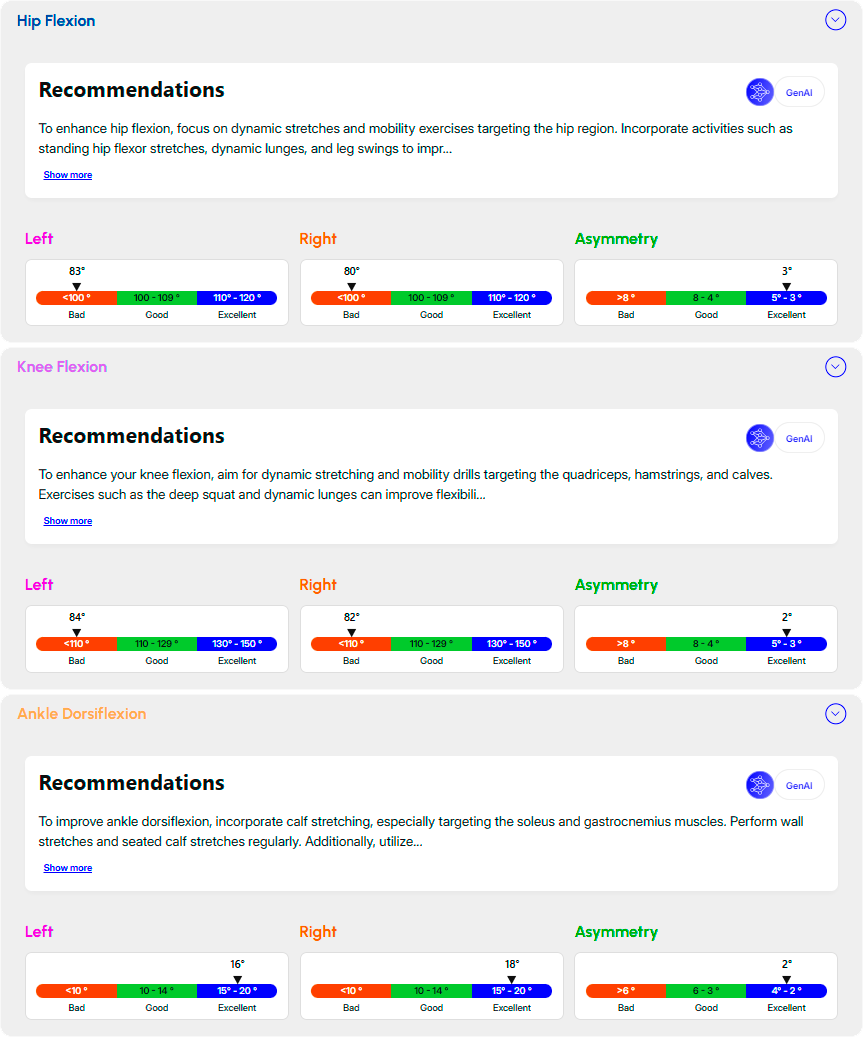
Pic. 8 Hip, Knee, and Ankle Flexion Analysis.
Measured joint angles with recommendations for improvement.
Clinicians & Coaches: This Changes Everything

Pic. 9 AI-Powered Rehab Plan.
Personalized exercises and progress metrics automatically suggested from biomechanical deficits.
Why It Matters
✔️ Track injury recovery
✔️ Prevent overuse and compensation
✔️ Quantify readiness for performance
✔️ Tailor rehab like a pro
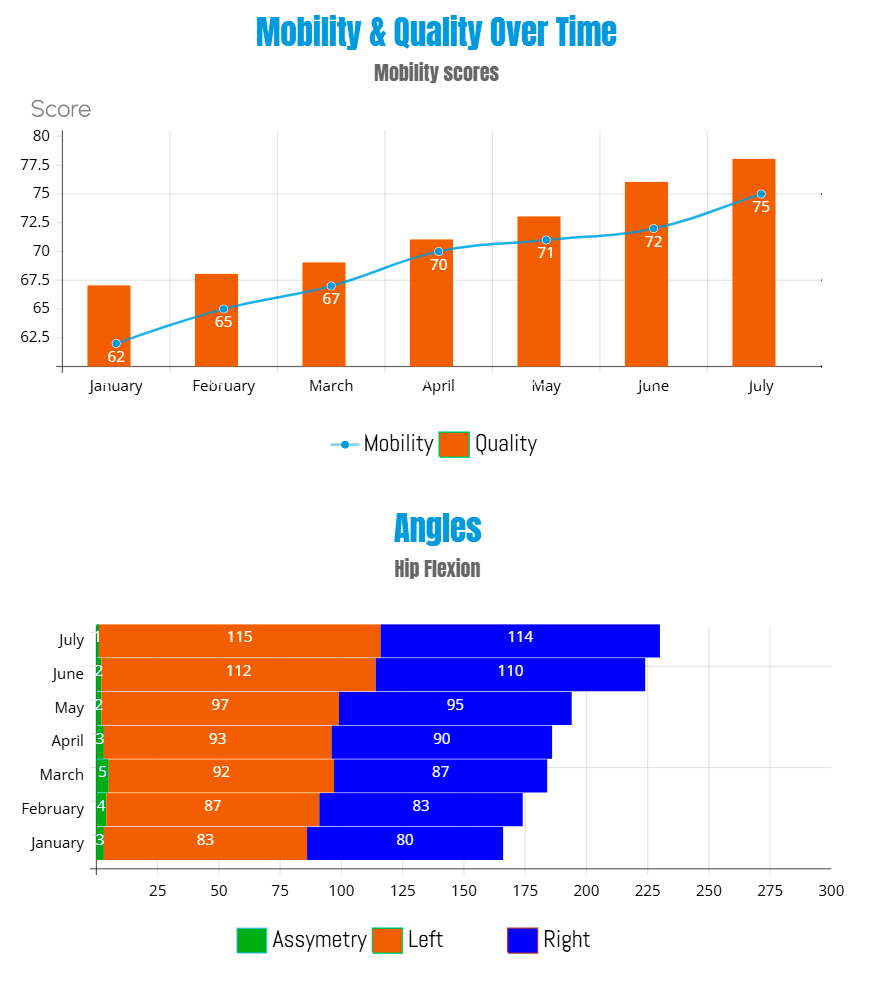
Pic. 10 Mobility & Quality Over Time.
Line graph showing user’s improvement in hip angles and mobility scores.
Bottom Line: Smart Squatting for a Healthier Future
With tools like AiKYNETIX, we can finally take the guesswork out of performance and put science in your corner.
Don’t just squat. Squat smart. Measure better. Move your best.
Run, Jump, Lift - AiKYNETIX | Run AiK | Jump AiK | Lift AiK - convenient on-the-go analysis.
📖 Explore More:
1️⃣ Why Vertical Jumps May Be a Better Strength Test Than a 1RM Back Squat
2️⃣ How to Record Running Videos for AI-Powered Analysis: A Step-by-Step Guide
3️⃣ Comprehensive Guide to Recording and Analyzing CMJs
4️⃣ How to Record Weightlifting Workouts Accurately with the AiKYNETIX App
5️⃣ The Ultimate Guide to Vertical Jump Testing: Metrics, Monitoring, and Performance
6️⃣ Decoding the Countermovement Jump for True Performance Insights
Check them out for deeper insights!



